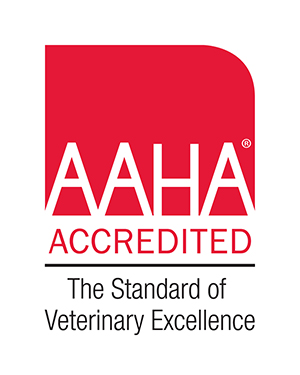- This list is not comprehensive.
- All information below is intended as guidelines only
- We do not accept responsibility for specific outcomes as a result of the information below
- We do recommend to call us if there is any doubt whether you should bring your pet in
When should I come in right away?
- Severe bleeding or bleeding that doesn’t stop within 5 minutes
- if the bleeding is not severe (e.g. toenails that are cut too short) apply continuous pressure for 5 minutes (without peeking to check whether the bleeding has stopped)
- Choking, trouble breathing or non stop coughing and gagging
- Inability to urinate
- You suspect your pet has eaten something poisonous
- antifreeze, xylitol, chocolate, rodent poison, raisins for dogs, lilies for cats
- If you are unsure what your pet has eaten is a concern https://www.petpoisonhelpline.com has a list of many possible toxins. They are also reachable by phone (they do charge a fee).
- For chocolate ingestion use the table below
- Injury to your pet’s eyeball / your pet’s eyeball is protruding
- Seizure lasting for more than 5 minutes
- Heat stroke
- Suddenly collapse/won’t move even when prompted to
- Gums suddenly look very pale
- Your pet is unconscious
- Suddenly paralysed in one or more of their legs
- Abdomen suddenly looks bloated (especially in large breed dogs – gastric dilation/torsion is a concern)
- Severe pain or vocalizing in pain
- Porcupine quills stuck in your pet (do NOT cut off the quills)
- Rabbit/guinea pig is lethargic and not eating
- In labor and labor is not progressing
- In pregnant cats during labour:
- if the cat is crying, displaying signs of pain and/or licking the vulva constantly during contractions
- if there is significant bleeding from the vulva for more than 10 minutes
- if there are more than 30 minutes of continuous, strong abdominal contractions without birth of the first kitten or if there are more than 2 hours of intermittent contractions between kittens.
- if it has been more than 4 hours from the start of obvious contractions to the birth of the first kitten
- if a fetal sac or kitten are partially visible outside of the vulva for more than 10 minutes
- if there are more than 3 hours between kittens without abdominal contractions.
- In pregnant dogs during labour:
- if the dog is crying, displaying signs of pain and/or licking the vulva constantly during contractions
- if there is significant bleeding from the vulva for more than 10 minutes
- if there are more than 20 to 30 minutes of continuous strong abdominal contraction without the birth of a puppy or if there are more than 2 hours with intermittent contractions between puppies.
- if there is a green discharge from the vagina without a puppy being born
- if there is a fetal sac or puppy partially visible outside the vulva for more than 10 minutes
- if there are more than 4 hours between the start of obvious abdominal contractions to the birth of the first puppy
- if there are more than 3 hours without abdominal contractions between puppies.
When should my pet be seen as soon as possible (typically within a few hours or the same day)
- Non weight bearing on one leg
- Vomiting or diarrhea and is lethargic, but will still move around voluntarily and drink.
- Refusal to drink for more than 24 hours
- Refusal to eat for more than 48 hours
- Significant amount of blood in the bowel movements
- Wounds without significant active bleeding
- Significant but not continuous cough and is lethargic.
- Gums look yellow
- Broken tooth
- Trouble passing bowel movements
- Skin problems that are worsening quickly to the point of the skin becoming moist, smelly or bloody.
- Maggot infestations
- Painful, but not extremely painful.
- A rapidly growing lump
- Face seems swollen
- Hives
When should I bring my pet in for the next available appointment (within a couple of days)
- itchy without obvious skin lesions
- diarrhea if your pet is still eating, drinking and active
- occasional vomiting if your pet is still eating, drinking and active
- ear infections
- a limp (if a pet is vocalizing pain or non weight bearing you should come in sooner)
- occasional sneezing
- occasional coughing
- an increase in drinking
- reduced appetite in a pet that is still drinking and active
- Dragging the bum (if the area around the bum does not appear painful, red or swollen)
- A lump that’s not growing larger every day
- Losing weight
How much chocolate is too much chocolate??
How much chocolate a dog has to eat before we can expect serious symptoms (e.g. heart rhythm abnormalities, seizures, coma, and death). If your dog has a comparable weight and ate more than the amount in the table you should bring them in immediately. If your dog of similar weight ate less than the amount shown, they might get diarrhea or vomit but are not EXPECTED to display life threatening symptoms.
Weight of Pet
| Type of chocolate | 5kg (11 lbs) | 10kg (22lbs) | 25kg (55lbs) | 50kg (110lbs) |
| White chocolate | Generally safe | Generally safe | Generally safe | Generally safe |
| Milk chocolate | 50 gram | 100 gram | 250 gram | 500 gram |
| Dark, sweet chocolate | 20 gram | 40 gram | 100 gram | 200 gram |
| 72% Cocoa | 12 gram | 24 gram | 60 gram | 120 gram |
| Baker (unsweetened) chocolate | 7 gram | 14 gram | 35 gram | 70 gram |
| Dry cocoa powder | 4 gram | 12 gram | 20 gram | 40 gram |


